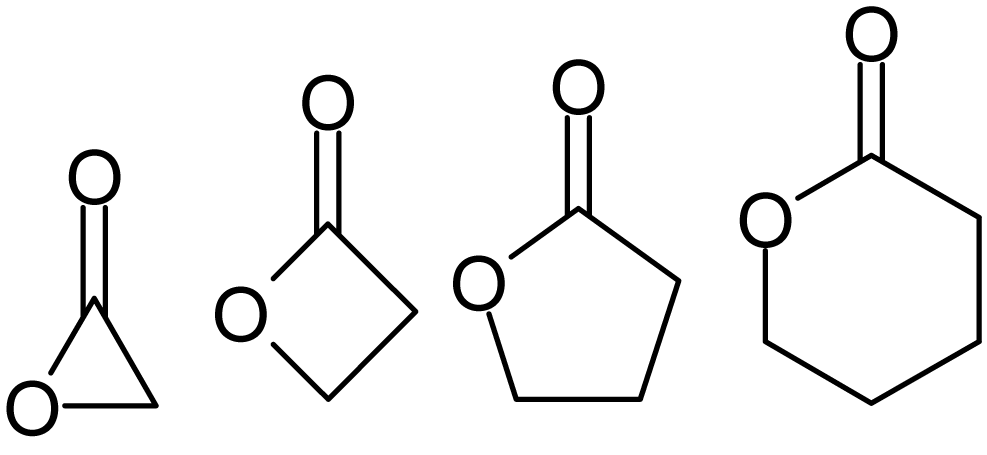|
Fittig
Wilhelm Rudolph Fittig (6 December 183519 November 1910) was a German chemist. He discovered the pinacol coupling reaction, mesitylene, diacetyl and biphenyl. Fittig studied the action of sodium on ketones and hydrocarbons. He discovered the Fittig reaction or Wurtz–Fittig reaction for the synthesis of alkylbenzenes, he proposed a diketone structure for benzoquinone and isolated phenanthrene from coal tar. He discovered and synthesized the first lactones and investigated structures of piperine naphthalene and fluorene. Career Fittig studied chemistry at the University of Göttingen, graduating as Ph.D. with a dissertation on acetone in 1858, under the supervision of Heinrich Limpricht and Friedrich Wöhler. He subsequently held several appointments at Göttingen, becoming Wöhler's assistant in 1858, privatdozent in 1860 and extraordinary professor in 1870. In 1870 he was appointed full professor at University of Tübingen and in 1876 at Strassburg, where the laboratories wer ... [...More Info...] [...Related Items...] OR: [Wikipedia] [Google] [Baidu] |
Wurtz–Fittig Reaction
The Wurtz–Fittig reaction is the chemical reaction of aryl halides with alkyl halides and sodium metal in the presence of dry ether to give substituted aromatic compounds. Charles Adolphe Wurtz reported what is now known as the Wurtz reaction in 1855, involving the formation of a new carbon-carbon bond by coupling two alkyl halides. Work by Wilhelm Rudolph Fittig in the 1860s extended the approach to the coupling of an alkyl halide with an aryl halide. This modification of the Wurtz reaction is considered a separate process and is named for both scientists. : The reaction works best for forming asymmetrical products if the halide reactants are somehow separate in their relative chemical reactivities. One way to accomplish this is to form the reactants with halogens of different periods. Typically the alkyl halide is made more reactive than the aryl halide, increasing the probability that the alkyl halide will form the organosodium bond first and thus act more effectiv ... [...More Info...] [...Related Items...] OR: [Wikipedia] [Google] [Baidu] |
Pinacol Rearrangement
The pinacol–pinacolone rearrangement is a method for converting a 1,2-diol to a carbonyl compound in organic chemistry. The 1,2-rearrangement takes place under acidic conditions. The name of the rearrangement reaction comes from the rearrangement of pinacol to pinacolone. : This reaction was first described by Wilhelm Rudolph Fittig in 1860 of the famed Fittig reaction involving coupling of 2 aryl halides in presence of sodium metal in dry ethereal solution. Mechanism In the course of this organic reaction, protonation of one of the –OH groups occurs and a carbocation is formed. If the –OH groups are not alike (i.e. the pinacol is asymmetrical), then the one which creates a more stable carbocation participates in the reaction. Subsequently, an alkyl group from the adjacent carbon migrates to the carbocation center. The driving force for this rearrangement step is believed to be the relative stability of the resultant oxonium ion. Although the initial carbocation is already ... [...More Info...] [...Related Items...] OR: [Wikipedia] [Google] [Baidu] |
Hamburg
Hamburg (, ; nds, label=Hamburg German, Low Saxon, Hamborg ), officially the Free and Hanseatic City of Hamburg (german: Freie und Hansestadt Hamburg; nds, label=Low Saxon, Friee un Hansestadt Hamborg),. is the List of cities in Germany by population, second-largest city in Germany after Berlin, as well as the overall List of cities in the European Union by population within city limits, 7th largest city and largest non-capital city in the European Union with a population of over 1.85 million. Hamburg's urban area has a population of around 2.5 million and is part of the Hamburg Metropolitan Region, which has a population of over 5.1 million people in total. The city lies on the River Elbe and two of its tributaries, the River Alster and the Bille (Elbe), River Bille. One of Germany's 16 States of Germany, federated states, Hamburg is surrounded by Schleswig-Holstein to the north and Lower Saxony to the south. The official name reflects History of Hamburg, Hamburg's history ... [...More Info...] [...Related Items...] OR: [Wikipedia] [Google] [Baidu] |
Ira Remsen
Ira Remsen (February 10, 1846 – March 4, 1927) was an American chemist who discovered the artificial sweetener saccharin along with Constantin Fahlberg. He was the second president of Johns Hopkins University. Early life Ira Remsen was born in New York City on February 10, 1846. He is the son of James Vanderbelt Remsen (1818–1892) and Rosanna Secor (1823–1856). He married Elisabeth Hilleard Mallory on Apr 3, 1875 in New York City, New York. They had two children together. Their son, Ira Mallory Remsen (1876–1928), became a playwright living in Carmel-by-the-Sea, California. Remsen earned an M.D. from the New York Homeopathic Medical College in 1865. He subsequently studied chemistry in Germany, studying under chemist Wilhelm Rudolph Fittig, receiving a PhD from University of Göttingen in 1870. Career In 1872, after researching pure chemistry at University of Tübingen, Remsen returned to the United States and became a professor at Williams College, where he wrote t ... [...More Info...] [...Related Items...] OR: [Wikipedia] [Google] [Baidu] |
Lactone
Lactones are cyclic carboxylic esters, containing a 1-oxacycloalkan-2-one structure (), or analogues having unsaturation or heteroatoms replacing one or more carbon atoms of the ring. Lactones are formed by intramolecular esterification of the corresponding hydroxycarboxylic acids, which takes place spontaneously when the ring that is formed is five- or six-membered. Lactones with three- or four-membered rings (α-lactones and β-lactones) are very reactive, making their isolation difficult. Special methods are normally required for the laboratory synthesis of small-ring lactones as well as those that contain rings larger than six-membered. Nomenclature Lactones are usually named according to the precursor acid molecule (''aceto'' = 2 carbon atoms, ''propio'' = 3, ''butyro'' = 4, ''valero'' = 5, ''capro'' = 6, etc.), with a ''-lactone'' suffix and a Greek letter prefix that specifies the number of carbon atoms in the heterocycle — that is, the distance between the relevant -OH ... [...More Info...] [...Related Items...] OR: [Wikipedia] [Google] [Baidu] |
Pinacol Coupling Reaction
A pinacol coupling reaction is an organic reaction in which a carbon–carbon bond is formed between the carbonyl groups of an aldehyde or a ketone in presence of an electron donor in a free radical process. The reaction product is a vicinal diol. The reaction is named after pinacol (also known as 2,3-dimethyl-2,3-butanediol or tetramethylethylene glycol), which is the product of this reaction when done with acetone as reagent. The reaction is usually a homocoupling but intramolecular cross-coupling reactions are also possible. Pinacol was discovered by Wilhelm Rudolph Fittig in 1859. Reaction mechanism The first step in the reaction mechanism is a one-electron reduction of the carbonyl group by a reducing agent —such as magnesium— to a ketyl radical anion species. Two ketyl groups react in a coupling reaction yielding a vicinal diol with both hydroxyl groups deprotonated. Addition of water or another proton donor gives the diol. With magnesium as an electron donor, the initia ... [...More Info...] [...Related Items...] OR: [Wikipedia] [Google] [Baidu] |
Lactone
Lactones are cyclic carboxylic esters, containing a 1-oxacycloalkan-2-one structure (), or analogues having unsaturation or heteroatoms replacing one or more carbon atoms of the ring. Lactones are formed by intramolecular esterification of the corresponding hydroxycarboxylic acids, which takes place spontaneously when the ring that is formed is five- or six-membered. Lactones with three- or four-membered rings (α-lactones and β-lactones) are very reactive, making their isolation difficult. Special methods are normally required for the laboratory synthesis of small-ring lactones as well as those that contain rings larger than six-membered. Nomenclature Lactones are usually named according to the precursor acid molecule (''aceto'' = 2 carbon atoms, ''propio'' = 3, ''butyro'' = 4, ''valero'' = 5, ''capro'' = 6, etc.), with a ''-lactone'' suffix and a Greek letter prefix that specifies the number of carbon atoms in the heterocycle — that is, the distance between the relevant -OH ... [...More Info...] [...Related Items...] OR: [Wikipedia] [Google] [Baidu] |
Heinrich Limpricht
Heinrich Limpricht (21 April 1827 – 13 May 1909) was a German chemist. Limpricht was a pupil of Friedrich Wöhler; he worked on the chemistry of furans and pyrroles, discovering furan in 1870. In 1852 he became lecturer and in 1855 extraordinary professor at the University of Göttingen. In 1860, he became ordinary professor at the Institute for Organic Chemistry at the University of Greifswald. His oldest daughter Marie (1856-1925) married in 1875 to Protestant theologian Julius Wellhausen Julius Wellhausen (17 May 1844 – 7 January 1918) was a German biblical scholar and orientalist. In the course of his career, he moved from Old Testament research through Islamic studies to New Testament scholarship. Wellhausen contributed to t .... Rudolph Fittig and Hans von Pechmann were two of Limpricht's notable pupils. References * * Gerda Schneider: ''Heinrich Limpricht und sein Schülerkreis (1827-1909)''; Diss. Greifswald 1970 Genealogy database entry by Vera V. Mai ... [...More Info...] [...Related Items...] OR: [Wikipedia] [Google] [Baidu] |
Friedrich Wöhler
Friedrich Wöhler () FRS(For) HonFRSE (31 July 180023 September 1882) was a German chemist known for his work in inorganic chemistry, being the first to isolate the chemical elements beryllium and yttrium in pure metallic form. He was the first to prepare several inorganic compounds, including silane and silicon nitride. Wöhler is known for seminal contributions in organic chemistry, in particular, the Wöhler synthesis of urea. His synthesis of the organic compound urea in the laboratory from inorganic substances contradicted the belief that organic compounds could only be produced by living organisms due to a "life force". However, the exact extent of Wöhler's role in diminishing the belief in vitalism is considered by some to be questionable. Biography Friedrich Wöhler was born in Eschersheim, Germany, and was the son of a veterinarian. As a boy, he showed interest in mineral collecting, drawing, and science. His secondary education was at the Frankfurt Gymnasium. During ... [...More Info...] [...Related Items...] OR: [Wikipedia] [Google] [Baidu] |
Davy Medal
The Davy Medal is awarded by the Royal Society of London "for an outstandingly important recent discovery in any branch of chemistry". Named after Humphry Davy, the medal is awarded with a monetary gift, initially of £1000 (currently £2000). History The medal was first awarded in 1877 to Robert Wilhelm Bunsen and Gustav Robert Kirchhoff "for their researches & discoveries in spectrum analysis", and has since been awarded 140 times. The medal is awarded annually and, unlike other Royal Society medals (such as the Hughes), has been awarded without interruption since its inception. The medal has been awarded to multiple individuals in the same year: in 1882, for example, it was awarded to Dmitri Mendeleev and Julius Lothar Meyer "for their discovery of the periodic relations of the atomic weights"; in 1883 to Marcellin Berthelot and Julius Thomsen "for their researches in thermo-chemistry"; in 1893 to Jacobus Henricus van 't Hoff and Joseph Achille Le Bel "In recognition of ... [...More Info...] [...Related Items...] OR: [Wikipedia] [Google] [Baidu] |
Fluorene
Fluorene , or 9''H''-fluorene is an organic compound with the formula (C6H4)2CH2. It forms white crystals that exhibit a characteristic, aromatic odor similar to that of naphthalene. It has a violet fluorescence, hence its name. For commercial purposes it is obtained from coal tar. It is insoluble in water and soluble in many organic solvents. Although sometimes classified as a polycyclic aromatic hydrocarbon, the five-membered ring has no aromatic properties. Fluorene is mildly acidic. Synthesis, structure, and reactivity Although fluorene is obtained from coal tar, it can also be prepared by dehydrogenation of diphenylmethane. Alternatively, it can be prepared by the reduction of fluorenone with zinc or hypophosphorous acid–iodine. The fluorene molecule is nearly planar,D. M. Burns, John Iball (1954), ''Molecular Structure of Fluorene'' Nature volume 173, p. 635. although each of the two benzene rings is coplanar with the central carbon 9. Fluorene can be found af ... [...More Info...] [...Related Items...] OR: [Wikipedia] [Google] [Baidu] |





